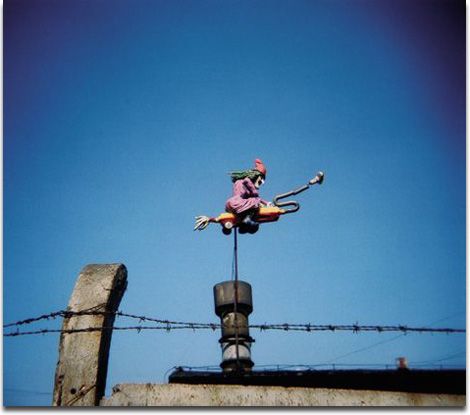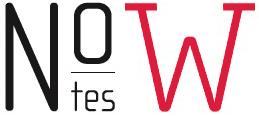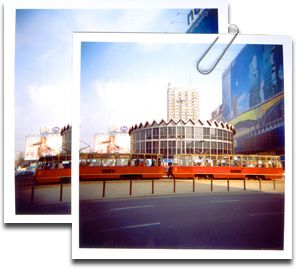JAK SIĘ PORUSZAĆ PO MIEŚCIE?//HOW TO GET ABOUT TOWN?
Najszybciej i najprzyjemniej podróżuje się metrem, ale jest tylko jedna, wątlutka linia. Dlatego zazwyczaj trzeba przesiadać się i korzystać również z tramwai i autobusów. Na wszystkie środki transportu publicznego, w tym pociągi, obowiązują takie same bilety. Bilety dostępne są w kioskach gazetami i na poczcie. Tam też można ładować plastikowe karty miejskie na 1 lub 3 miesiące.
The fastest and most pleasant mode of transport is the metro, but there is only one line, so we have to go by bus and streetcar as well. There is one type of tickets for all public transport including commuter trains. Tickets and 1 or 3 month City Cards are available at newspaper stands and the post office.
Ceny//Prices
- jeden przejazd - 2,40 PLN (u kierowcy 3 PLN, trzeba mieć odliczoną kwotę i lepiej traktować to jako rozwiązanie awaryjne, bo kierowca nie ma obowiązku mieć biletów
- dobowy - 7,20 PLN
- 3-dniowy - 12 PLN
- tygodniowy - 24 PLN
- single ride - 2.40 PLN (tickets can also be bought from the driver but these cost 3 PLN, but you must have exact change, and tickets are not always available)
- 24 hour pass - 7.20 PLN
- 3-day pass - 12 PLN
- 7 day pass - 24 PLN
Metro
Niestety mimo że budowa trwa już 25 lat, udało się zbudować niecałą jedną linię - z południa na północ, czyli z Ursynowa przez Centrum na Żoliborz. Metro uchodzi za jedno z najczystszych i najbezpieczniejszych na świecie. Statystyki policyjne mówią o 1 przestępstwie dziennie. Kursuje mniej więcej do północy, a w piątki i soboty aż do 3 rano (co pół godziny).
Unfortunately, in spite of 25 years of hard work we have only managed to build one unfinished line that runs north-south, from Ursynów through the Centrum out to Żoliborz. Our metro is one of the cleanest and safest in the world, with the police noting one crime daily on average. The metro is open until midnight on weekdays and 03:00 on weekends (late night trains run every 30 minutes).

Transport konwencjonalny: Dworzec Centralny i autobus /
Conventional transport: Central Railway Station and a bus
fot. Marta Zasępa www.martazasepa.lap.pl
Autobusy i tramwaje//Buses and streetcars
Tramwaje nie docierają do wszystkich dzielnic, ale są najlepszym sposobem by przedrzeć się przez zakorkowane centrum. Dla turystów najprzydatniejsza jest linia 175, łącząca lotnisko, Dworzec Centralny, centrum i Stare Miasto oraz 180, która przejeżdża obok większości ważnych zabytków - od pałacu w Wilanowie przez centrum, Stare Miasto, dawne getto po cmentarz na Powązkach. W weekendy kursuje też turystyczna linia 100, którą obsługują autobusy dwupoziomowe. Latem uzupełnia ją zabytkowy tramwaj T, który zahacza także o Pragę czy Muzeum Powstania Warszawskiego.
Na przystankach powinny być podane godziny ich przyjazdów, ale czasami znikają w tajemniczych okolicznościach i wtedy pozostaje wypatrywać i czekać. Najlepiej sprawdzić rozkłady jazdy na stronie www.ztm.waw.pl. Dokładna trasa podana jest też na tablicy wewnątrz pojazdu, ale tylko po polsku. Tylko w metrze anonsowane są kolejne przystanki. W autobusach i tramwajach trzeba śledzić nazwy na kolejnych przystankach lub poprosić o pomoc pasażerów.
Autobusy i tramwaje jeżdżą od 5-6 rano do 23. Mniej popularne linie krócej. Są też linie nocne - wszystkie krzyżują się przy Dworcu Centralnym (pod żółtymi daszkami) i odjeżdżają jednocześnie kwadrans przed i kwadrans po pełnej godzinie. Bilet na nocny kosztuje 4,80 PLN. W tych pojazdach czasami panuje wyjątkowo radosna atmosfera, która czasem, może skończyć się bójką. Odwagi!
Warsaw’s streetcars do not service all districts of the city, but they certainly are among the best ways to traverse the congested downtown area. The buses of greatest interest to visitors are the 175 (airport, downtown, train station, town center, Old Town) and the 180 (many scenic areas, Palace in Wilanów, Old Town, Old Jewish Ghetto, Powązki Cemetery). On weekends the 100 bus is a special tourist line served by double-decker vehicles. In summer the line T (with old fashioned streetcar) traverses the Praga district and runs by the Warsaw Uprising Museum.
Buses and streetcars have been known to run according to schedule, but also tend to disappear and reappear at the strangest times. The best source of up-to-date information (in Polish!!!) is www.ztm.com.pl. Ticket information is available in English, German, and Russian. Exact routes are posted inside the vehicles. Stops are announced only in the metro, so on buses and streetcars one must carefully keep track of stops or ask another passenger for assistance.
Buses and streetcars run from 05:00-06:00 in the morning until 23:00, though some of the less frequented lines close down earlier. There are also night buses whose routes all pass through the center of town and converge near the Central Train Station (yellow-roofed bus shelters). They generally depart every 30 minutes on the quarter hour, night bus tickets cost 4.8 PLN. These buses are often full of revelers and can be quite an adventure and fun, but be forewarned that fights and other altercations are not uncommon. Be brave!
Taxi
Oczywiście można też zamówić taksówkę. Zazwyczaj zamawia się ją przez telefon, ale można też próbować złapać ją na ulicy. Do dyspozycji mamy bardzo wiele korporacji, podajemy te, które nie są zbyt drogie (ok. 2 PLN za kilometr) i honorują (ale trzeba się jeszcze upewnić wsiadając) karty kredytowe: Ele Taxi (4822) 811 11 11, Euro Taxi (4822) 96 62, Halo Taxi (4822) 96 23, Korpo Taxi (4822) 96 24, MPT (4822) 9191. Oprócz stawki za kilometr płaci się ok. 6 PLN za wejście. Po 22.00 i w weekendy stawka za kilometr wzrasta o połowę, a na dalekich przedmieściach - podwójnie. Należy uważać na lotnisku i dworcu - często podjeżdżają taksówkarze niezrzeszeni w oficjalnych korporacjach żądający na koniec podroży horrendalnych stawek. Nie dajcie się nabrać! Taksówka z lotniska do centrum powinna kosztować ok. 30 PLN.
Why not take a cab instead? It’s easiest to order by phone, but you can also try your luck on the street. There are many cab companies, below we have listed several of the moderately priced ones (about 2 PLN per kilometer) and which generally accept credit cards (please double check before the ride): Ele Taxi (4822) 811 11 11, Euro Taxi (4822) 96 62, Halo Taxi (4822) 96 23, Korpo Taxi (4822) 96 24, and MPT (4822) 9191. In addition to the per kilometer rate, there is a flat fee of 6 PLN per ride. After 22:00 and on weekends the per kilometer rate increases by 50%, and can go up to 100% of the standard rate (for trips into the suburbs.) Special caution is advised at airports and train stations. Often independent taxi drivers (non-affiliated in taxi corporations) charge much higher rates, and can really surprise you at the end of the ride. Don’t be fooled, a taxi from the airport to downtown should cost around 30 PLN.

Transport niekonwencjonalny, ulica Burakowska /
Unconventional transport, Burakowska St.
fot. Marta Zasępa www.martazasepa.lap.pl
WKD i SKM//WKD and SKM Commuter Rail
Zachodnie przedmieścia łączy z Warszawą (stacja Śródmieście WKD - róg al. Jana Pawła II i Alej Jerozolimskich) WKD (Warszawska Kolejka Dojazdowa, www.wkd.com.pl). Obowiązują w niej osobne bilety, które można kupić w kasie na dworcu. To najwygodniejszy sposób, by dostać się do urokliwego miasta-ogrodu w Podkowie Leśnej.
SKM (Szybka Kolej Miejska, www.skm.warszawa.pl) biegnie z Pruszkowa na zachodzie, przecina centrum i biegnie dalej na wschód, do Sulejówka i Starej Miłosnej. Na SKM obowiązują takie same bilety jak na metro, tramwaj i autobus.
WKD (WKD Downtown Station- corner of Jana Pawła II Ave. and Jerozolimskie Ave.) links Warsaw with the western suburbs. (www.wkd.com.pl), special WKD tickets are best purchased at the WKD train station. This is the most convenient way to get to the charming garden town of Podkowa Leśna.
SKM trains (www.skm.warszawa.pl) serve the entire Warsaw metropolitan area from Pruszków in the west, eastward to Sulejówek, and Stara Miłosna. The same tickets that work for the metro, streetcars and buses are also valid on the SKM.












2 comments:
Chciałabym zaktualizować, że podróżując kolejką WKD odrębny, specjalny bilet, który można kupić w kasach WKD obowiązuje od stacji Opacz. Do Opaczy można podrózować na Kartę Miejską.
A tak poza tym bardzo mi się ten blog podoba i natychmiast wkleję linka na moim blogu, który jest odwiedzany przez osoby z całego świata.
Ewa said...
"...który jest odwiedzany przez osoby z całego świata"
Super...
Post a Comment